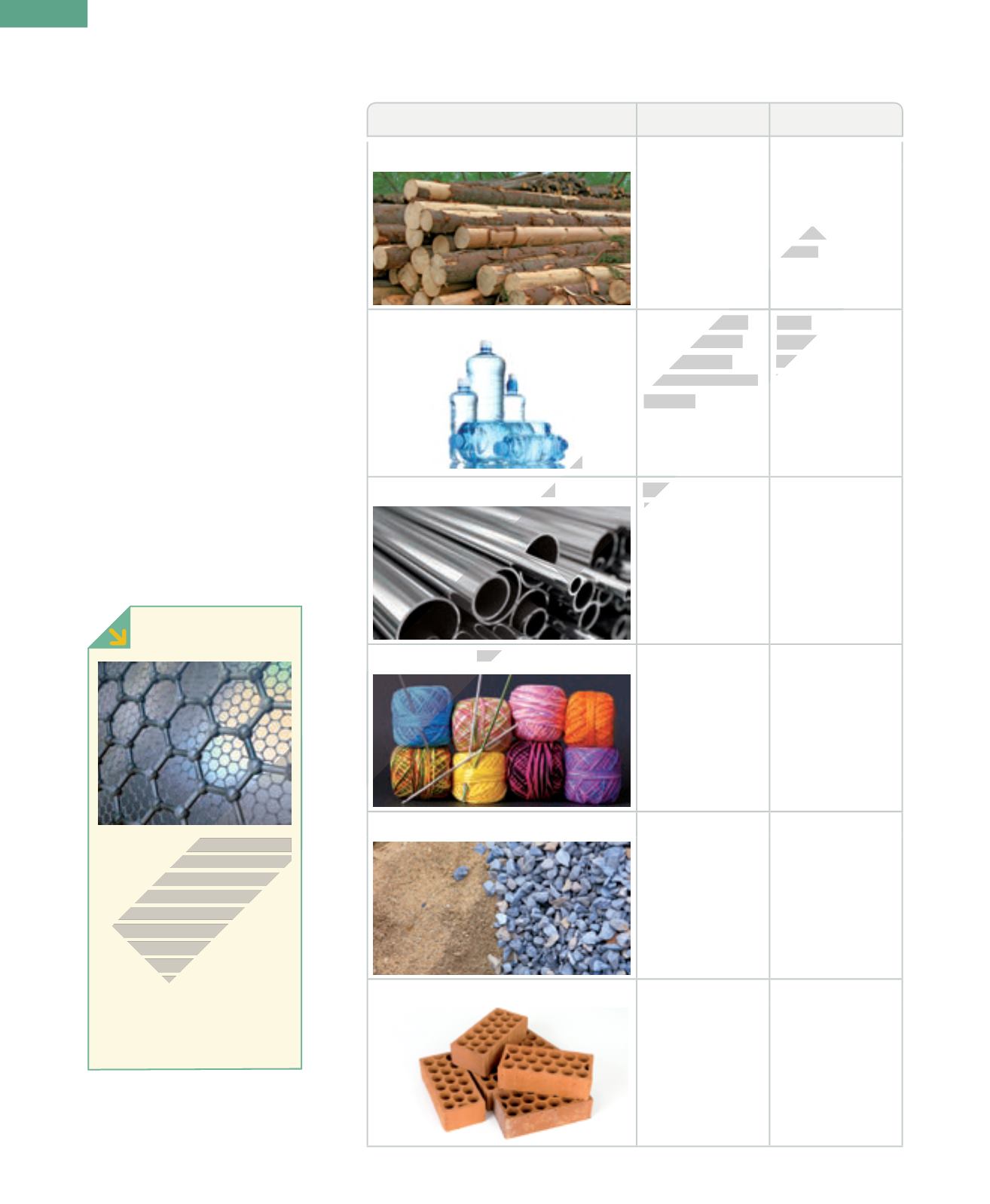
16
5.
MATERIALS FOR TECHNICAL USE
Material
Sources
Applications
wood
We get this from
the thicker parts of
trees.
Furniture,
industrial paper,
construction, wall
and floor covering,
decoration, for
fuel …
plastic
We get this from
oil, coal, natural
gas, vegetable
matter and animal
proteins.
Pipes,
packaging
21
,
containers,
covering for
cables …
metal and alloy
We get this from
minerals in rocks.
Structures
and pieces of
machinery,
tools, electronic
components,
joints …
textiles
We get this from
vegetable, animal
and mineral raw
materials
22
.
In the form of
thread
23
for
making different
fabrics
24
for
different purposes:
clothes, carpets,
curtains …
stone
We get this from
different forms of
rocks, from huge
blocks to sand.
Construction
material and
decoration.
ceramic
We get this from
shaping
clay
25
and
cooking it at high
temperatures.
Construction
material like bricks,
dishes, basins
and decorative
elements.
GRAPHENE,
A NEW MATERIAL
Graphene is a very resistant
material, 200 times harder,
thinner and more transparent
than steel. According to the
scientist James Hone, to make a
hole in a sheet of graphene that
is the thickness of cellophane,
we would have to use a pencil
with the full weight of an
elephant balancing on top of
it. This material is also flexible,
it conducts electricity and it is
waterproof
26
.
21
packaging
: material around things to
protect them
22
raw material
:
the basic material from
which a product is made
23
thread
:
long thin pieces of cotton or
wool
24
fabric
: material made from weaving
25
clay
: earth that when mixed with water
can be made into different shapes
26
waterproof
: doesn’t let water in
ADVANCE EDITION


